For over two decades, hybrid and electric vehicles have moved from futuristic concepts to mainstream options. Yet, discussions around their long-term reliability often echo outdated anxieties, filled with concerns about battery life and expensive repairs. It’s time to dispel these myths. This is the real-world story of owning what some might call the “worst” hybrid model for over 200,000 miles: a second-generation Honda Civic Hybrid.
Choosing a Civic Hybrid in 2011 wasn’t the obvious choice. A long daily commute of approximately 80 miles each way, coupled with soaring gas prices, pushed me towards fuel efficiency without a hefty price tag. The popular Toyota Prius, even used, remained almost as expensive as a new car. I was about to settle for a conventional vehicle when I discovered the Honda Civic Hybrid (HCHII). Local dealerships had about a dozen, all roughly 18 months old with around 30,000 miles. The price was incredibly appealing—around $14,000, nearly half the original MSRP. After test driving a few and consistently seeing close to 50 mpg, I found the right color, made the deal, and felt like I’d gotten away with something.
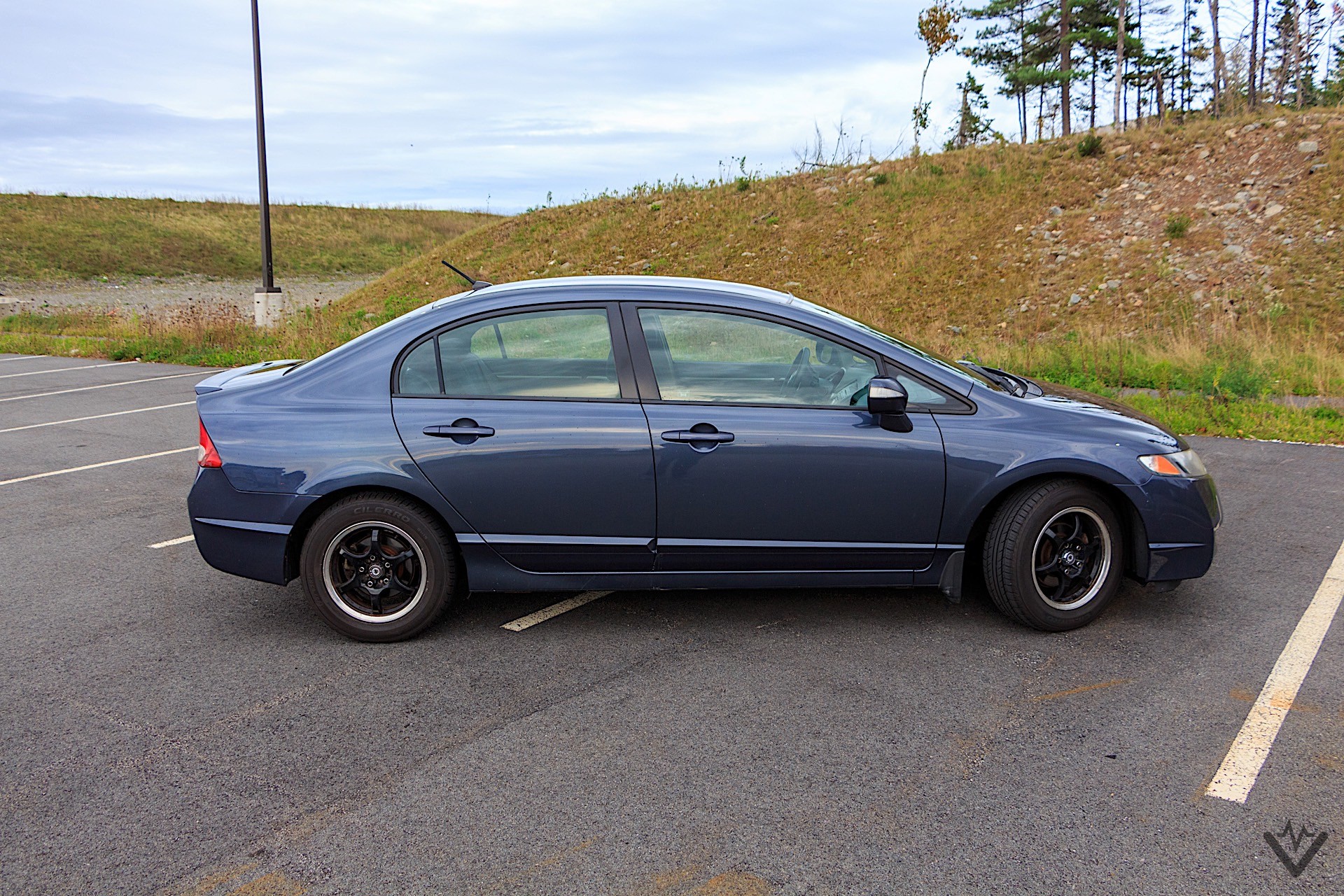 Honda Civic Hybrid on dealer lot
Honda Civic Hybrid on dealer lot
Before finalizing the purchase, some details about the car emerged. Despite being nearly two years old, it had only been in service for 18 months, with six months spent sitting at the dealership. For those familiar with the HCHII, this raised a red flag concerning the battery. This model has a known peculiarity, even mentioned in the owner’s manual (though often overlooked by used car salespeople): prolonged periods of inactivity can significantly shorten the battery’s lifespan, potentially leading to failure within a year.
The car had barely moved in the last six months, accumulating only about 200 miles, mostly within the dealership lot. I bought it aware of the potential battery issue, knowing it was a gamble against the warranty mileage limit. Fortunately, I won that race, but more on that later.
One of the main attractions of the Honda Civic Hybrid for me was its understated nature. Unlike the attention-grabbing Prius, it was a Civic first and foremost, just one that happened to use less gas. I wasn’t particularly excited about the CVT or the modest 20 hp electric motor. In fact, the CVT was a source of worry, fearing potential expensive failures. As it turned out, this fear was unfounded.
What did I do first with my new Honda Civic Hybrid, besides commuting long distances? I took it racing, of sorts.
 Honda Civic Hybrid autocrossing
Honda Civic Hybrid autocrossing
Track days with a car I was still paying off seemed risky. Instead, I discovered autocross, offering spirited driving at lower speeds and shorter durations. I was immediately captivated. This led to upgrading to road-legal Toyo slicks, transforming the HCHII into a surprisingly quick car on the track.
The combination of electric torque, sticky tires, and the CVT allowed me to outperform much faster cars, like Nissan GT-Rs and Porsches, on tighter autocross courses (though driver skill likely played a role too). I competed for three seasons with the Civic Hybrid, earning class trophies each year.
While autocrossing might seem irrelevant to the average hybrid owner, it highlights the breadth of experience this car endured. It handled long commutes, extended road trips, and weekend thrashing.
Initially, with factory-fresh Firestone tires, my daily commute fuel economy hovered around 47 mpg. The car’s MPG gauge was accurate, a fact confirmed quickly by anyone filling three or more tanks a week. This efficiency persisted. On weekends, driving on slower highways around 50 mph, fuel economy improved further. Occasionally, I’d see over 50 mpg, but never for an entire tank.
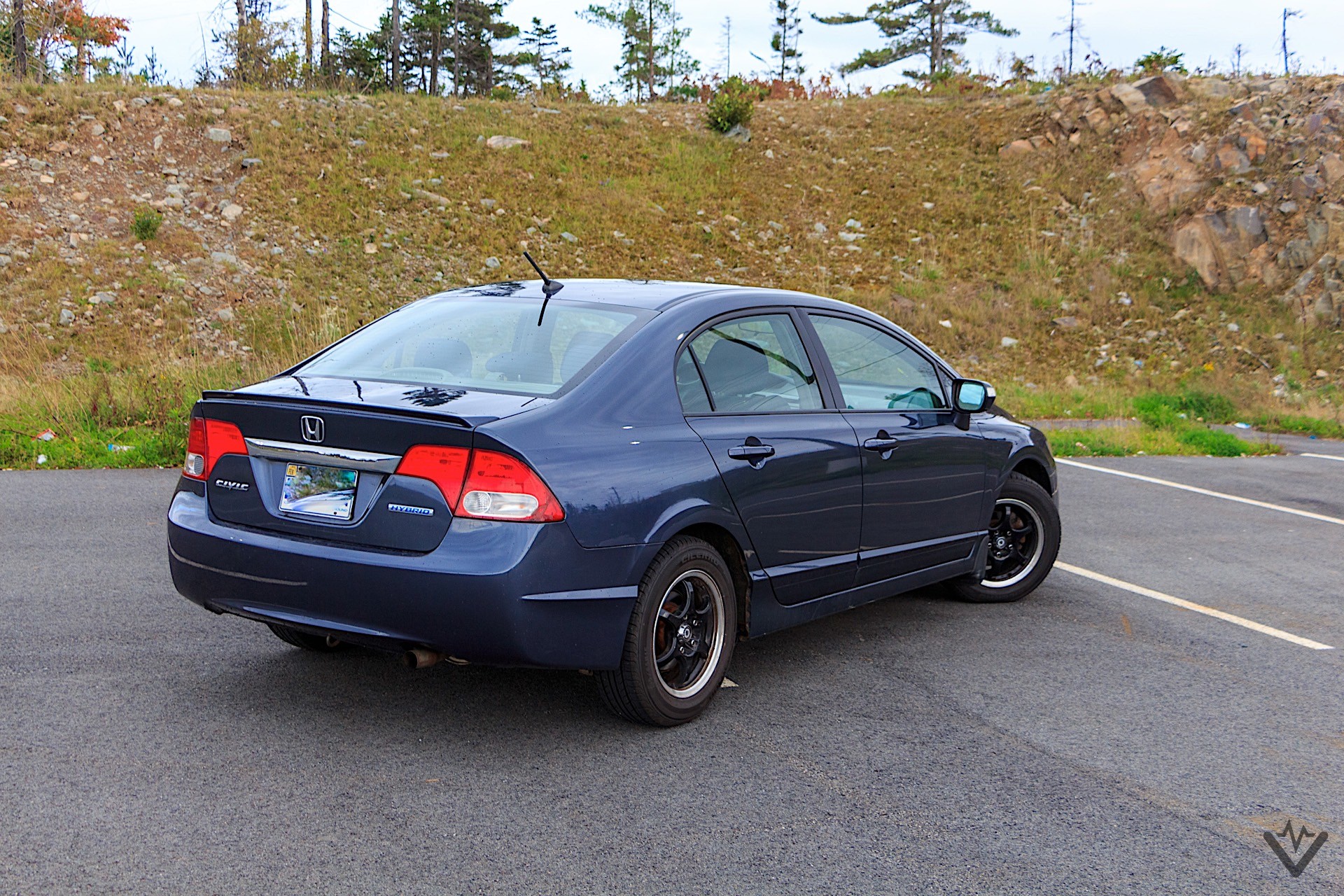 Honda Civic Hybrid Fuel Gauge
Honda Civic Hybrid Fuel Gauge
My mundane commutes became a hypermiling exercise, as much as possible without becoming a road hazard on the two-lane highway. How often did I use the brakes on my commute? As few as three times in light traffic. I could even eliminate one stop by coasting to a stop sign, but patience often wore thin.
I discovered that briefly engaging “S” mode on the CVT, such as at a yield sign, would disable auto start-stop. “S” mode also increased regenerative braking, maximizing momentum on downhills and at off-ramps and stop signs.
Looking back at my records, my best full tank yielded 48 mpg. Impressive for a car with a 20 hp electric motor and a 1.3-liter engine that often ran at redline on inclines, especially with cruise control engaged. When pushed hard, the engine generated heat, a contrast to its inability to do so at idle, a common trait in modern small-engine Hondas.
Despite this efficiency, I never achieved 500 miles on a single tank. Typically, due to fuel station locations and my schedule, it was closer to 400 miles or less. Winter months were notably worse, with heavy winter wheels and tires dropping economy into the high 30s. Snowstorms further reduced it, but that’s expected when pushing through six inches of snow. Less forgivable was the aerodynamic undertray, which broke off in just my third snowstorm, requiring numerous (and quickly re-destroyed) clips for replacement.
Maintenance was frequent, dictated by the Maintenance Minder, usually every six weeks or around 8,000 miles. Three liters of 0W20 oil wasn’t expensive, so oil changes were manageable. Less convenient was the CVT fluid change, also three liters but at a higher cost per liter. Dealer service for this was almost $200, but it was a quick DIY job, fortunate since I was replacing it with every oil change by the time I traded the car.
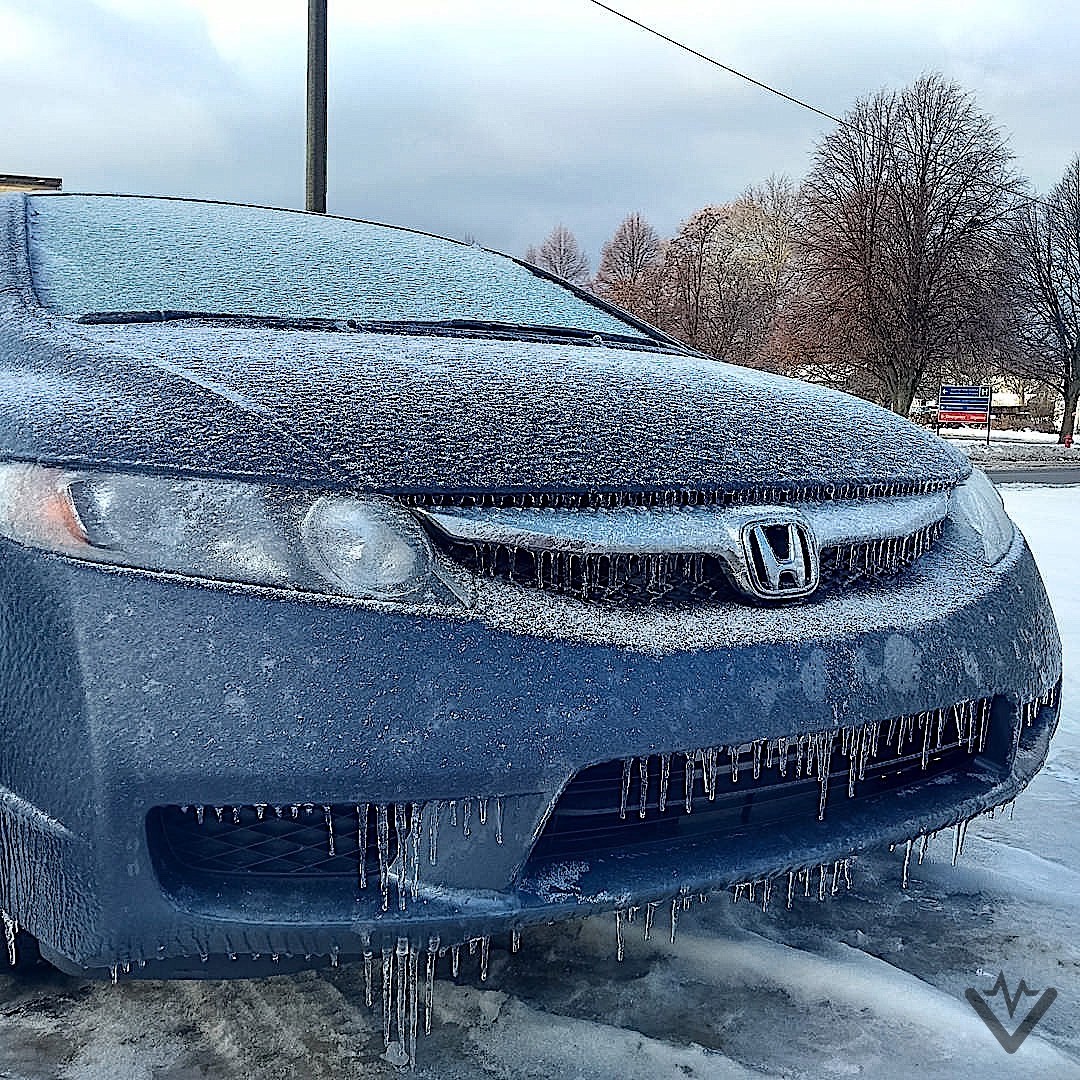 Honda Civic Hybrid in Canada
Honda Civic Hybrid in Canada
Around 74,000 miles, the dreaded battery “recalibration” issue, feared by all Honda Civic Hybrid owners, finally occurred. The battery charge would rapidly fluctuate, going from full to empty within a mile or two, remaining empty for a few miles, and then slowly recharging. During these episodes, electric assist was absent. Worse, on hills, the car diverted power to battery charging, significantly reducing acceleration from the already modest 90 hp 1.3-liter engine.
When the recalibration became a daily occurrence, particularly on hills, I recorded it and visited my Honda dealer. Despite the IMA (Integrated Motor Assist) light not being illuminated—typically required for a battery replacement—they acknowledged the fault and replaced the battery within days.
Although I can’t locate the exact invoice, I recall the replacement battery costing around $6,500, with the total bill exceeding $8,000 including tax. Had this been out of warranty, would I have scrapped the car? No, for two reasons. First, the car operates even with a severely degraded battery (and can even run temporarily without a high-voltage battery). Second, aftermarket batteries were available for around $2,000 at the time and could be swapped in a couple of hours. Today, a new replacement pack can be found for around $1,500, making Honda Civic Hybrid battery replacement more affordable.
The battery issue revealed another unexpected feature. Like many hybrids, the Civic Hybrid uses the electric motor for primary engine starting, resulting in near-instant starts without the cranking of a conventional starter. However, it also has a 12-volt conventional starter as a backup.
On the day before the battery replacement, the conventional starter engaged. Accustomed to silent starts, I initially thought something had dramatically failed until I remembered the backup system. I only heard that conventional starter three more times during my ownership: once on an extremely cold morning, and twice when the high-voltage battery was disconnected for welding repairs.
Post-battery replacement, MPG returned to the 40s from a low of 35, and the uphill charging sluggishness vanished. This efficiency continued consistently. The only recurring issue was the CVT “rubber-banding” effect, which worsened as CVT fluid service intervals approached, manifesting as shuddering from a stop on inclines. More frequent fluid changes resolved this, although the intervals gradually shortened.
At 150,000 miles, the first major mechanical repair was needed. The rear brakes, due to infrequent use, had worn down to the indicators. Worse, the rear rotors were badly scored. Hybrid and EV brake pads might last a long time due to regenerative braking, but brake servicing is still crucial, especially with infrequent use. Neglecting slider greasing and piston checks since purchasing the car 120,000 miles prior led to needing calipers, rotors, and pads.
Five Canadian winters and high mileage had taken their toll. The replacement calipers even seized straight out of the box, a common issue with remanufactured parts. Warranty replacements (and new pads again) resolved the problem, but the lower quality parts meant another rotor and pad replacement before selling the car.
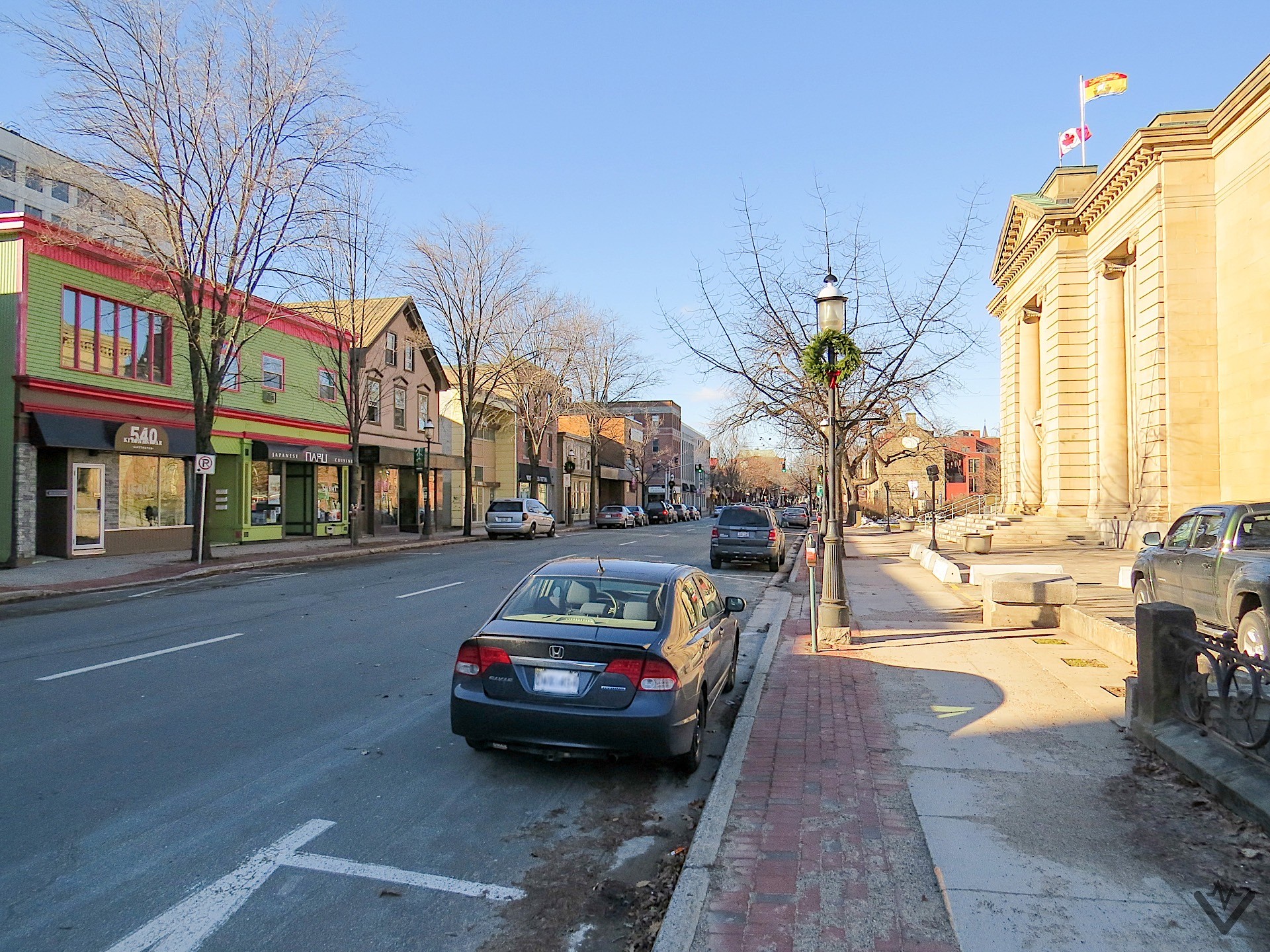 Honda Civic Hybrid Interior
Honda Civic Hybrid Interior
The front pads lasted even longer, despite autocross use, needing replacement around 180,000 miles. They had been on the car so long that the rotor bolt holes were too small to remove them from the studs. Cutting off both rotors took a week of evenings. The key takeaway: service your brakes proactively, even if they seem fine.
The 12-volt battery failed around seven years into ownership, on a very cold night. The car would start, but headlights and dashboard lights were inoperable, and it misfired severely. A tow home and a battery replacement the next day resolved the issue.
Around 80,000 miles, I upgraded the factory rear sway bar to a thicker one from a Civic Si. This significantly improved handling and driving enjoyment. Later, when sway bar links needed replacement and I made a mistake during installation, the car drove acceptably even without a rear sway bar, albeit with noticeably softer handling. Once, I briefly drove around the neighborhood without a muffler, just to hear the sound, and it was still remarkably quiet.
Slightly over a year into ownership, the car was in its first accident. While waiting in a slow drive-thru, the Honda CR-V ahead reversed into me. Despite honking, the CR-V’s spare tire and hitch impacted my car, requiring a new bumper and hood. The body shop did an excellent job matching the complex color-shifting paint. Later, the trunk was repainted due to a factory recall, and the entire rear end three years after that due to another incident.
Beyond these incidents, the car was incredibly reliable. However, I didn’t love it.
The excellent fuel economy on country drives, well over 40 mpg compared to my previous car’s 30 mpg, encouraged more driving. My wife and I explored the province every weekend, accumulating around 48,000 miles annually for the first two years. Later, moving closer to work reduced mileage. Tire choice significantly impacted fuel economy. Avoid low rolling resistance tires at your peril. Two sets of summer tires I purchased were not low rolling resistance, and their negative impact on fuel economy made them a costly mistake.
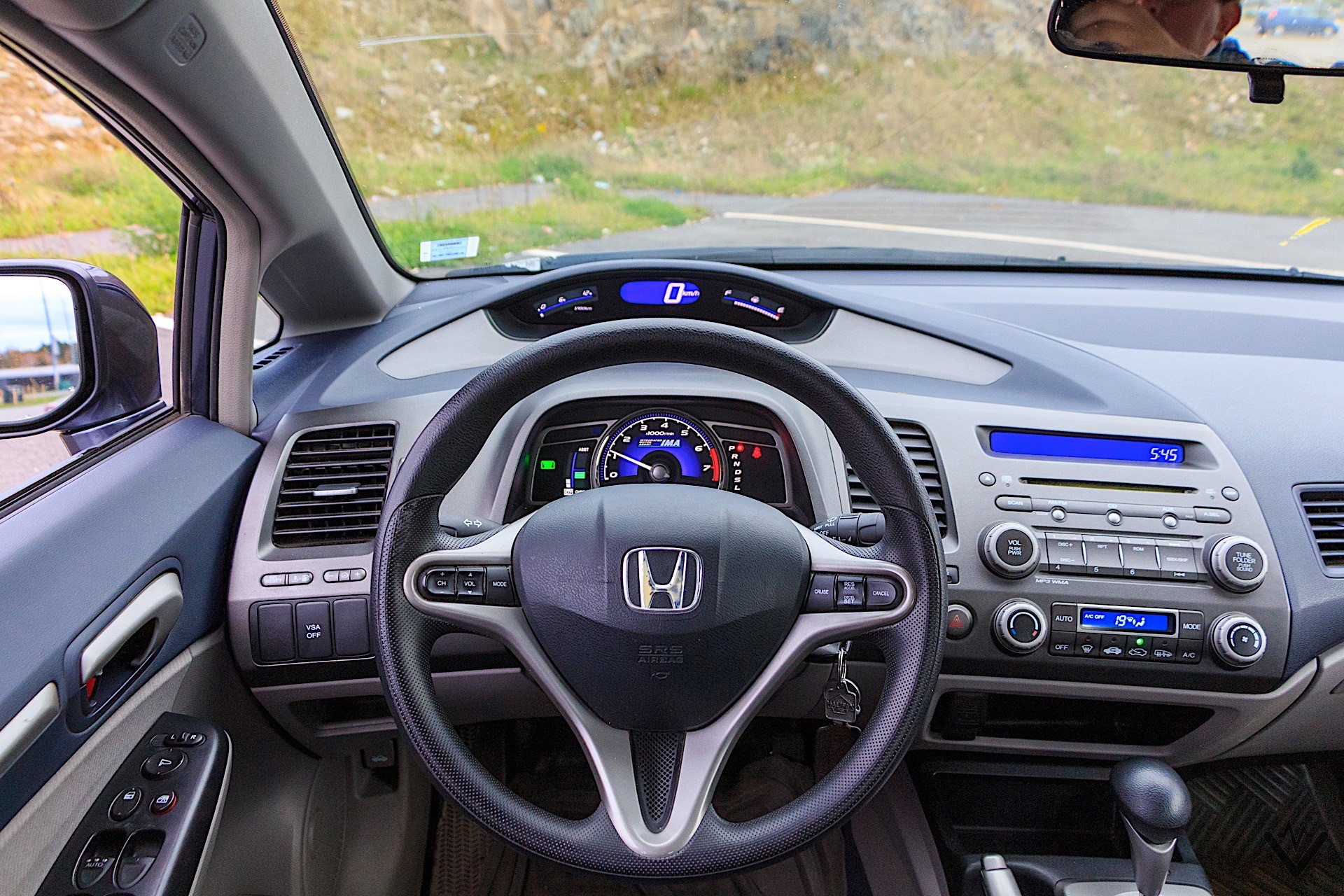 Honda Civic Hybrid Dashboard
Honda Civic Hybrid Dashboard
After the warranty battery replacement, shop visits were limited to annual inspections and the airbag recall, common to many 2000s-era cars. All other maintenance was done at home. The car was mechanically sound, but emotionally uninspiring.
With 90 hp plus a modest electric boost, acceleration was sluggish, frustrating for passing or merging. The CVT, with its increasingly pronounced rubber-banding effect, detracted from driving enjoyment. But the car was undeniably reliable. It simply kept going, even with suboptimal tires, still achieving high 30s MPG, making it difficult to fault practically. It was an appliance, dependable and efficient. The blue interior, remarkably, showed less wear when I traded it in at high mileage than my newer 2018 Civic shows now with far fewer miles.
One day at 163,000 miles, I was unwell and drove to the store. Leaving the store, at a poorly designed intersection with a crosswalk far to the left, I stopped for a pedestrian. A Ford Ranger following too closely rear-ended me hard on the left rear. Adrenaline surged, I braked to avoid being pushed into the pedestrian, and after exchanging insurance information, I assumed my time with “Heidi” (the Hybrid) was over. The crumpled rear quarter panel looked like a total loss for a car worth maybe $13,000 four years prior.
Surprisingly, depreciation had plateaued. While the car lacked emotional appeal, replacing it in similar condition for the expected insurance payout seemed impossible. A body shop estimate came back at $9,000. To my surprise, the adjuster opted to repair it. I briefly hoped for a total loss payout, but the car was repaired over a month and nearly five figures later, almost back to its pre-accident condition, though requiring a few return trips to get it right. Now, it was a high-mileage car with almost entirely new paint. On the plus side, it was rust-free, at least externally.
At 180,000 miles, shortly after the brake work, the next significant expense arrived. The original rear shocks were leaking, and a front tie rod had excessive play. I opted to replace the entire suspension, including inner and outer tie rods. Upgrading with parts from someone lowering their nearly-new Civic Si transformed the handling, feeling like a new car for less than the cost of decent tires.
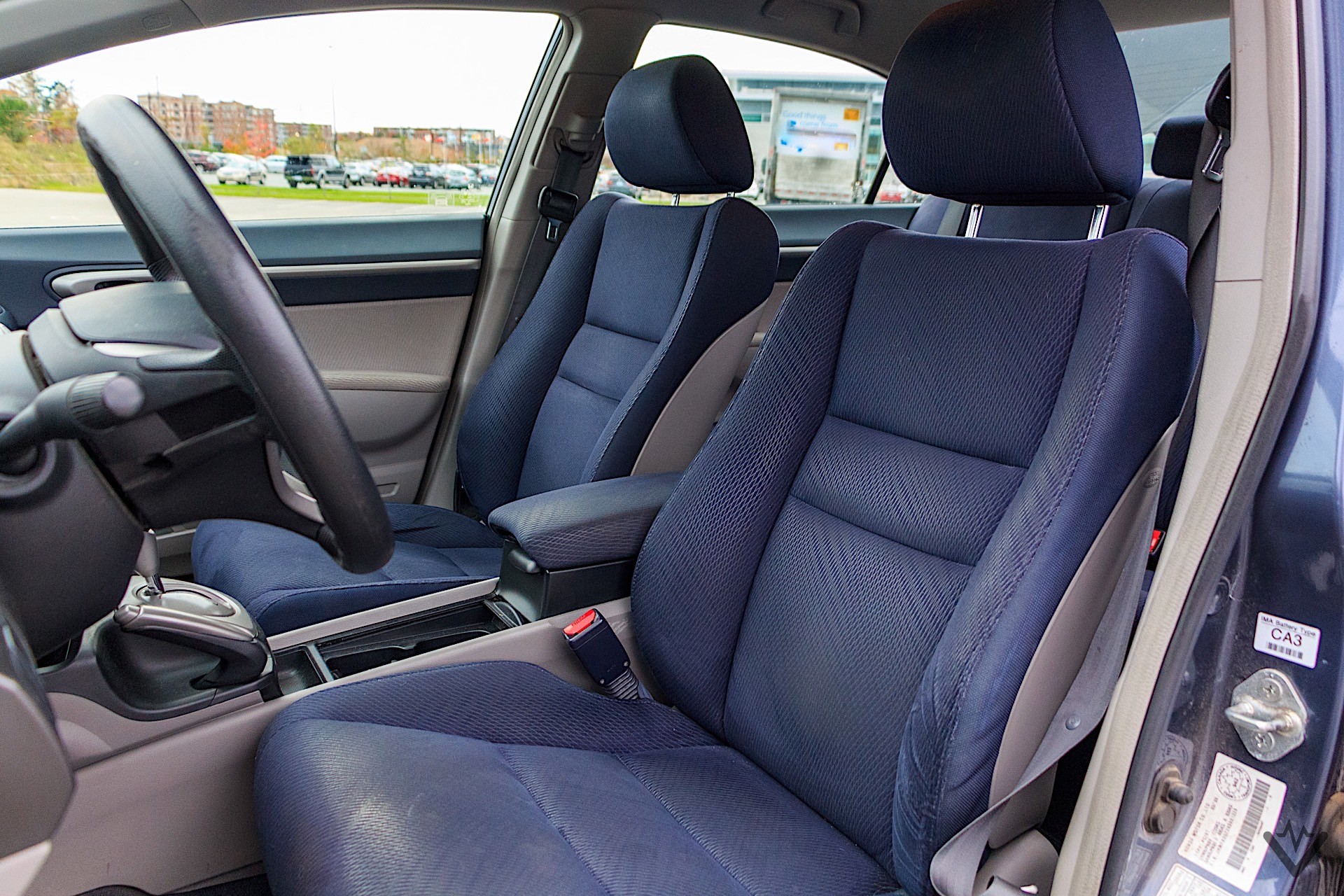 Honda Civic Hybrid Blue Interior Detail
Honda Civic Hybrid Blue Interior Detail
Upgrades can reignite vehicle enthusiasm. Sharing a chassis between electric and gas models is advantageous, allowing for parts swaps like this. Imagine fitting Golf GTI components to an e-Golf or ID.3 for a similar effect.
Finally, after eight years and just over 210,000 miles, it was time to move on. Mileage had declined to the mid-30s, for reasons I couldn’t pinpoint. The air conditioning, never strong, further reduced fuel economy and performance when used heavily. My driving needs had changed, working from home and driving test vehicles weekly, annual mileage had dropped to around 10,000.
This Honda Civic Hybrid, often unfairly labeled one of the worst hybrids ever made, served me reliably for eight years and over 210,000 miles. Beyond routine maintenance and a significant warranty battery replacement (which was anticipated and could have been DIY-fixed affordably), it was remarkably trouble-free. The CVT shudder could have been addressed with a new clutch set, but it didn’t seem worthwhile at that point.
Basic maintenance and one major warranty repair were the extent of issues. Hybrid and electric vehicles, especially from established manufacturers, are not to be feared.
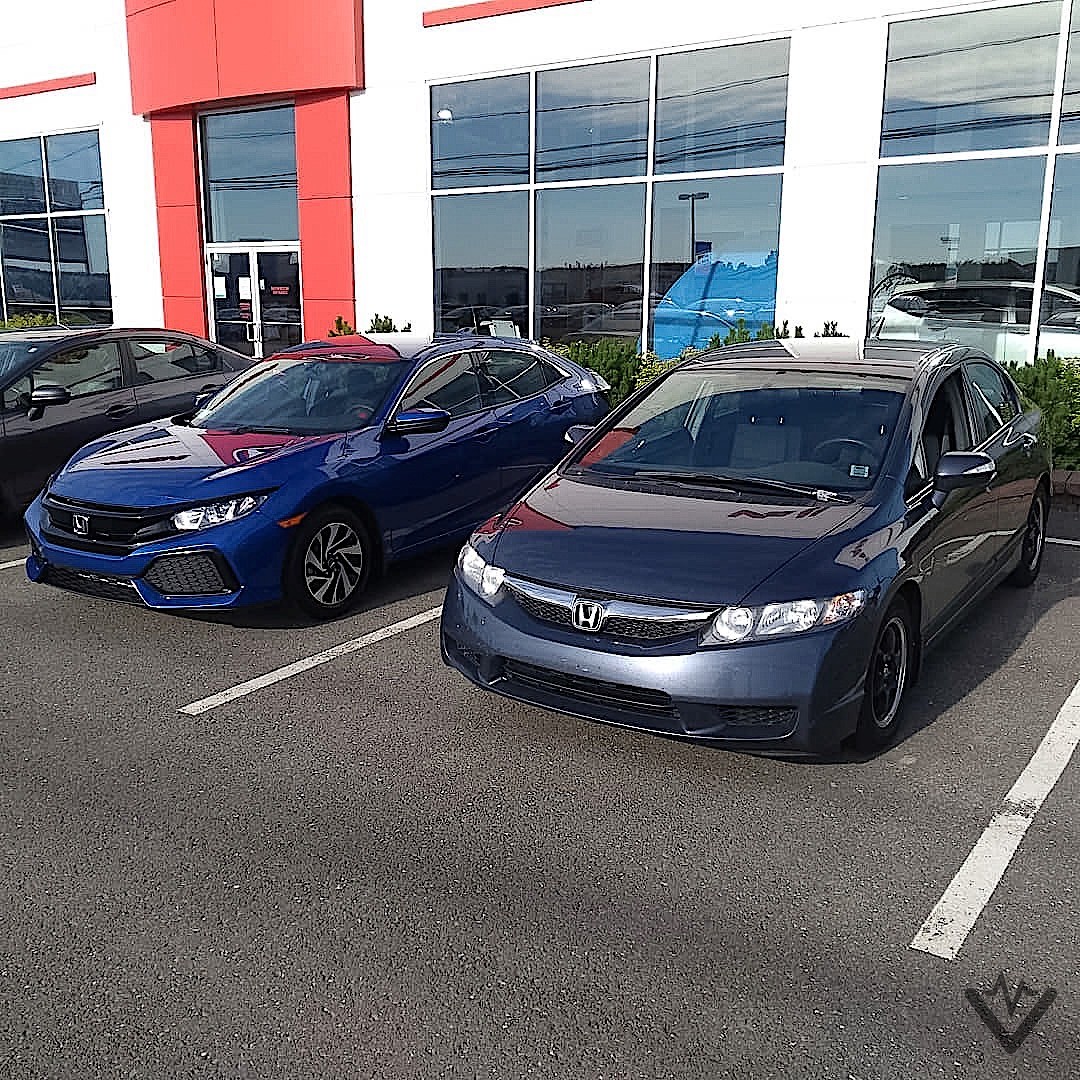 Honda Civic Hybrid Trade-in Day
Honda Civic Hybrid Trade-in Day
Expecting a low trade-in offer, I was surprised when a dealer further away gave a reasonable offer, and the car sold quickly.
This might not be a thrilling narrative, but that’s the point. This “worst” hybrid was essentially flawless for over 200,000 miles. While I can’t guarantee identical experiences, everything beyond the hybrid powertrain is similar to conventional gasoline cars, built in vast quantities. Coupled with at least an eight-year warranty on electric components, they are built to last. Comparing the cost of a medium-range EV battery pack to a new engine reveals similar price points.
To conclude the story, a vehicle history check revealed Heidi is still on the road, recently re-registered. While mileage isn’t updated, it’s likely well over 250,000 miles and still going strong. Don’t fear new technology; embrace it, especially when considering a Honda Civic Hybrid.